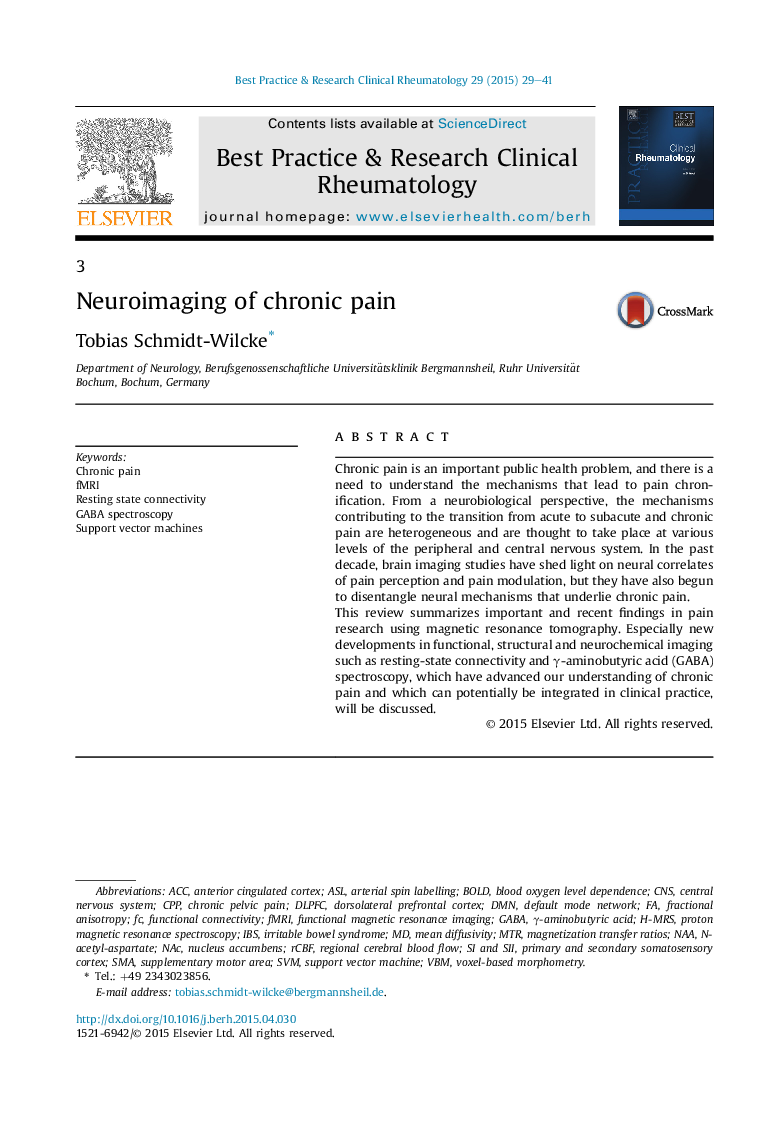| Article ID | Journal | Published Year | Pages | File Type |
|---|---|---|---|---|
| 3342948 | Best Practice & Research Clinical Rheumatology | 2015 | 13 Pages |
Chronic pain is an important public health problem, and there is a need to understand the mechanisms that lead to pain chronification. From a neurobiological perspective, the mechanisms contributing to the transition from acute to subacute and chronic pain are heterogeneous and are thought to take place at various levels of the peripheral and central nervous system. In the past decade, brain imaging studies have shed light on neural correlates of pain perception and pain modulation, but they have also begun to disentangle neural mechanisms that underlie chronic pain.This review summarizes important and recent findings in pain research using magnetic resonance tomography. Especially new developments in functional, structural and neurochemical imaging such as resting-state connectivity and γ-aminobutyric acid (GABA) spectroscopy, which have advanced our understanding of chronic pain and which can potentially be integrated in clinical practice, will be discussed.
